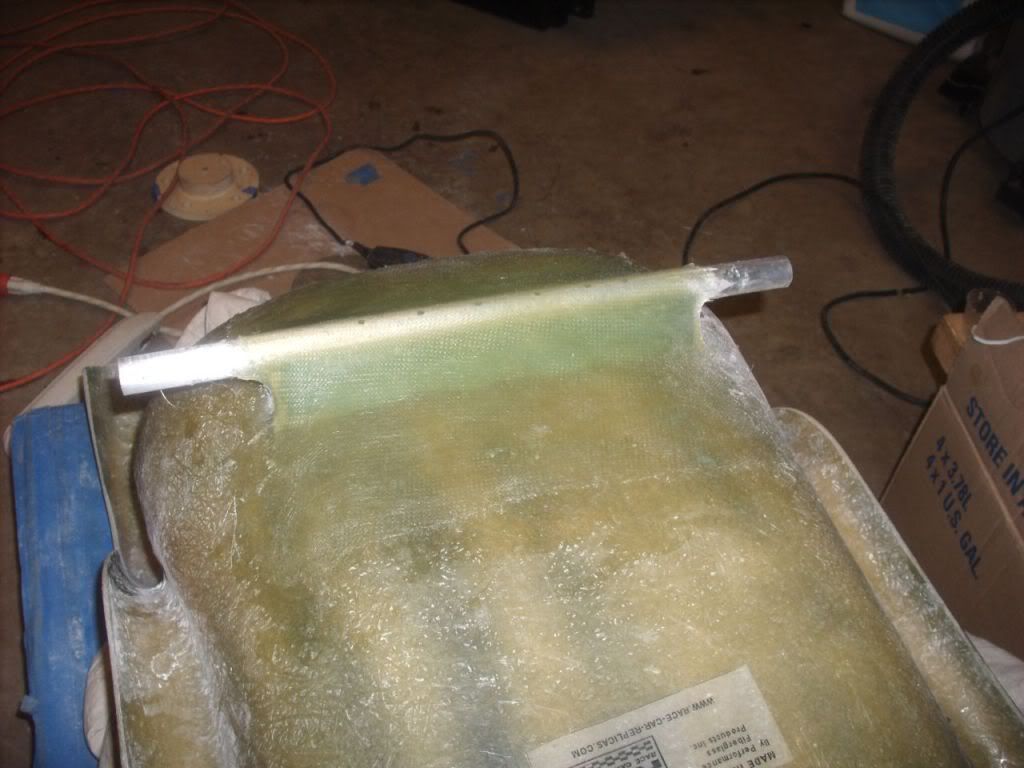The cooling system has been a real issue on the GTMs
Most of the problems resulted from trapped air in the heads.
Seeing as the coolant hoses run down from the water pump, & then back up to the radiator, you can visualize the problem. There was (& still is) a lot of discussion about bleeding/solving this problem.
The other issue on the GTM was the corvette expansion tank being mounted in the front, right behind the radiator.
This is problematic, as it is not he highest component in the cooling system, as it needs to be, to effectively bleed air from the complete system.
Current solution is to mount a different coolant tank above the engine & run bleed lines from engine/radiator to repositioned tank. you can also just put a petcock on the top of the radiator, & manually bleed it.
We had success on the GTM-R race car with the standard system, but had to bleed system 2-3 times after running the car on the track to purge system completely. We now run the rear coolant tank, with few issues.
I have thought about the factory heater system on the LS engines. The water pump has a 2 stage function that allows coolant to bypass the thermostat & circulate coolant through the engine as it warms up. When the thermostat opens, it closed this port & all coolant circulates through the radiator & heater core.
I believe that installing a heater "bypass valve" into our aftermarket systems is a bad deal. With the heater valve closed & in bypass mode, all you are doing is circulating hot coolant out of the engine, through the valve & right back into the inlet of the water pump un-cooled.
As with any fluid, the coolant will take the path of least resistance, & flow through the heater hoses, instead of the radiator, & you may loose 20-30% of your cooling ability.
On the Corvette this water is running through the heater core (small radiator) continuously & at least you are dissipating some heat. Plus the system was designed for this feature.
Most of the problems resulted from trapped air in the heads.
Seeing as the coolant hoses run down from the water pump, & then back up to the radiator, you can visualize the problem. There was (& still is) a lot of discussion about bleeding/solving this problem.
The other issue on the GTM was the corvette expansion tank being mounted in the front, right behind the radiator.
This is problematic, as it is not he highest component in the cooling system, as it needs to be, to effectively bleed air from the complete system.
Current solution is to mount a different coolant tank above the engine & run bleed lines from engine/radiator to repositioned tank. you can also just put a petcock on the top of the radiator, & manually bleed it.
We had success on the GTM-R race car with the standard system, but had to bleed system 2-3 times after running the car on the track to purge system completely. We now run the rear coolant tank, with few issues.
I have thought about the factory heater system on the LS engines. The water pump has a 2 stage function that allows coolant to bypass the thermostat & circulate coolant through the engine as it warms up. When the thermostat opens, it closed this port & all coolant circulates through the radiator & heater core.
I believe that installing a heater "bypass valve" into our aftermarket systems is a bad deal. With the heater valve closed & in bypass mode, all you are doing is circulating hot coolant out of the engine, through the valve & right back into the inlet of the water pump un-cooled.
As with any fluid, the coolant will take the path of least resistance, & flow through the heater hoses, instead of the radiator, & you may loose 20-30% of your cooling ability.
On the Corvette this water is running through the heater core (small radiator) continuously & at least you are dissipating some heat. Plus the system was designed for this feature.

